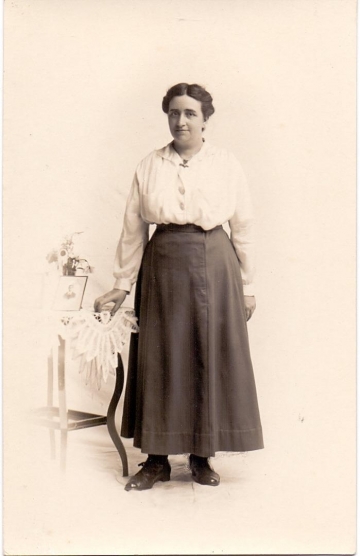Mary Ann Rawle
The full resource is FREE to all registered users of the website
If you are not already registered you can sign up for FREE website access to download the full resource.

- Born: 1878
- Died: 1964
- Occupation: Cotton mill worker
- Claim to fame: She wrote a diary while in prison of her suffragist activities
Mary Ann was born in Lancashire in 1878, becoming a cotton mill worker at the age of ten. In 1900, she married Francis Rawle, an iron turner, with whom she had two children. The poverty and harsh working conditions of her own life and those of the people around her drove her to political activism, which started with local politics and led to her becoming a member of her local branch of the Independent Labour Party at Ashton-Under-Lyne.
By 1906, she was a member of the Women’s Social and Political Union (WSPU), and was part of a deputation of 400 women textile workers who went to the prime minister on 19 May. At that event, she came into contact with Teresa Billington-Greig, Annie and Jessie Kenney and Christabel Pankhurst. She took on more of a role within her local WSPU and attended the second Women’s Parliament in March 1907, dressed in shawl and clogs. She was arrested in London and sentenced to two weeks in Holloway Prison.
While she was in prison, she kept a diary, with a passionate appeal for why women should be granted the vote: ‘The women of the Union are prepared to make any sacrifice even liberty itself to get the franchise.’ She wrote about how the vote would get them better wages and it would secure them better rights. Mary wrote about the injustices that existed against women, such as having no rights over their children and that a man could divorce his wife but ordinary women would find it impossible to divorce an unfaithful husband.
She finished part of her plea with the statement, ‘Give them [women] the chance and you will see that you as well as they will profit by it.’
In 1907, she joined the Women’s Freedom League and became the secretary of its Ashton-Under-Lyne branch. By 1910, she had moved to Grantham and became involved with the National Union of Women’s Suffrage Societies there in 1913. She would later stand as a Labour candidate in the Grantham municipal elections and was chair of her branch of the Women’s Co- operative Guild for 17 years.
The 1918 Representation of the People Act failed to grant her the vote and she would have to wait until the 1928 Act to see her dream come true.
Mary continued to be a campaigner as she got older, and in 1945 she was chair of the Grantham branch of the Old Age Pensions Association.
Glossary
- Iron turner – A person who makes items from iron.
- Franchise – The vote.
- Municipal elections – Elections to positions within a city or town or its governing body.
- Women’s Co-operative Guild – The Co-operative Guilds were organisations of working people who joined together to provide goods and services to working communities at a fair price. The Women’s Co-operative Guild was founded in 1883 to represent women in the movement. It supported women’s suffrage and argued that women should have full equal rights with men.
Questions
- Why is it significant that Mary wore her clogs and shawl to visit Parliament?
- Why did the 1918 Act not grant Mary the vote?
- What does Mary Rawle’s diary reveal about ordinary women’s reasons for wanting the vote?
Useful resources
- Mary Ann Rawle's diary
- Image: WSPU brooch owned by Mary Ann Rawle
